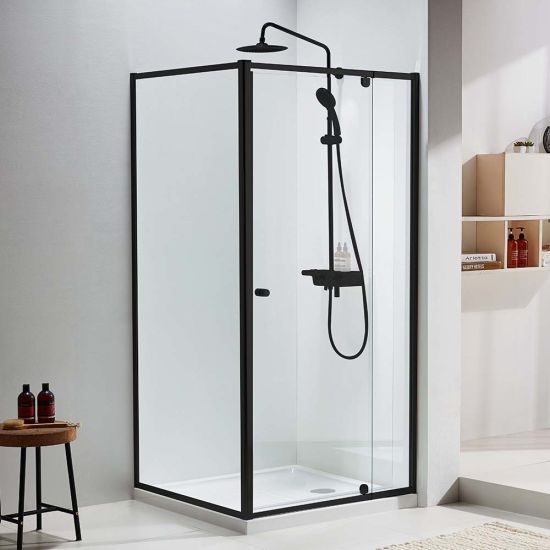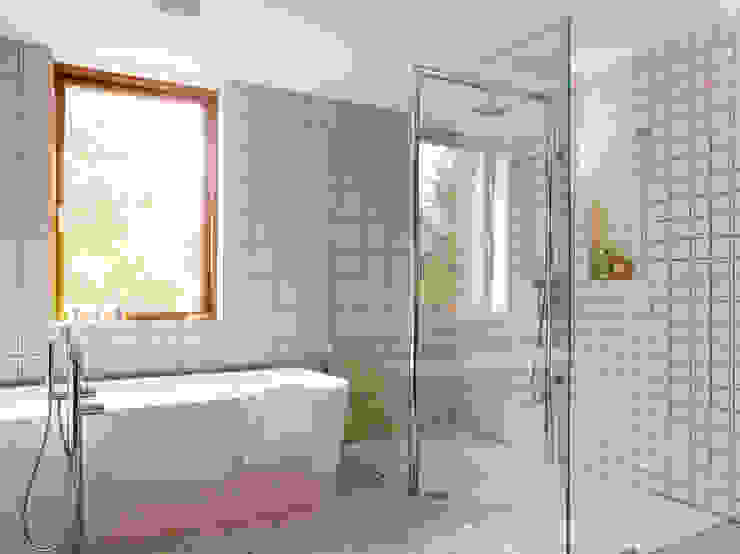Presented here in the next paragraph you might get a good deal of worthwhile additional info about How to Install a Direct-to-Stud Shower Enclosure.

An effective shower installation requires cautious planning and a lot of job. In most cases, you will require to do 3 types of jobs: mounting walls, setting up the plumbing, and finishing walls.
Different Kinds Of Shower Units
- Push-on Mixer: The hose and spray parts of the push-on mixer shower unit can be linked to the bathroom faucet based on your requirement, and the water temperature level can be adjusted via the faucets. Push-on mixers are cheap and also very simple to mount. Nonetheless, although the hose pipe link is basic, it is conveniently dislodged. In addition, it is troublesome to change the temperature level.
- Bath/Shower Mixer: The hose pipe and also spray of this kind of shower are combined with a bath mixer faucet, as well as the temperature level can be adjusted through the bathroom taps. It is an extremely inexpensive choice and no extra plumbing is entailed. However, the bath/shower mixers likewise suffer from troublesome temperature control choices.
- Manual Mixer: The hose and spray of a hand-operated mixer shower unit are a part of the wall surface device as well as the hot and cold water supplies are attached to a solitary valve The temperature level as well as stress of the water are managed with either one or a selection of knobs (in much more pricey showers). Although temperature level control is a lot easier in hand-operated mixer kinds, they are much more pricey than the formerly stated mixers. They additionally need additional plumbing of hot and cold water pipes.
- Thermostatic Mixer: The tube as well as spray of this shower kind belong of the wall device and also the hot and cold water supplies are connected to a solitary shutoff below too. It is complete with a built-in stabiliser to self-adjust the water temperature and to avoid it from becoming also hot. Among the greatest benefits of a thermostatic mixer shower type consists of convenient temperature control. Nonetheless, it is the most expensive of the various mixer alternatives.
- Power Shower: A power shower is a solitary device having a powerful electrical pump that is capable of altering both the water stress and also temperature. This sort of shower can be fitted if there is water supply from a cold water cistern and a warm water cylinder. A power shower makes the modification of both pressure and also temperature easy. On the other hand, it disagrees for water heated up directly by the shower or where the water is provided by a mix boiler under mains stress.
- Electric Shower: An electrical shower is plumbed into a mains cold water supply as well as it warms the water electrically. It is essential to note that for this shower kind to be set up, the mains stress needs to be a minimum of 0.7 kg/sq centimeters (10lb/sq in). The device enables the temperature and stress to be adjusted using a knob. Designs with temperature level stabilisers are much better as they stay untouched by various other taps elsewhere in use within the house. A significant disadvantage of electric showers is that the control knob just permits the option of heats at less pressure, or lower temperature levels at a higher stress. This is problematic in the winter season when the spray is often weak as well as the mains water is chillier. However, this trouble is dealt with in some versions which are available with a winter/summer setup.
A Lot Of Common Errors
- Breaking or disregarding local code limitations.
- Making use of pipelines that are too small.
- Attaching copper to galvanized without utilizing a brass or dielectric suitable in between both.
- Not utilizing tape or pipeline compound at threaded joints.
- Uneven your components when mounting them.
- Not setting up an air gap filling for fixtures.
- Reducing supply stub outs also short to set up the shutoff valves onto after the finished wall is in place.
- Not correctly straightening tubes into installations or stop valves. (Compeling the nut onto the compression ring at an angle when the tubes goes to an angle will trigger a leakage.).
- When turning the water back on in your home, constantly run the outside hose shutoff or flush your bathrooms to hemorrhage dirt and also air from the lines. This particles can trigger issues in your sink taps as well as various other plumbing trim.
Preparation.
First of all, you have to pick the sort of shower that you wish to mount. It is necessary to establish whether the picked shower is capable of dealing with certain systems and can manage a risk-free degree of water via the boiler. Many shower systems nowadays are developed to be adaptable to different water stress (such as stored warm water and cool mains).
It is additionally vital to take into consideration the water pressure as well as the preparation of the piping as well as water drainage for the shower.
Method.
Depending upon the kind of shower you wish to set up, the shower head must either be suited order to avoid its contact with the water in the bathroom listed below or the base tray, or it has to have a check shutoff.
Prior to beginning, it is advisable to mark the placements of the shower head and control, as well as to intend the pipe-work involved. Additionally, the water drainage system to eliminate the drainage will require to be intended. Both positions of the cable television path as well as the shower switch will certainly also need to be considered if an immediate or electrical shower system is being set up.
Make use of the instruction guide provided with the shower device to fit the shower control.Before fitting the pipelines that will provide the water to the shower system, it is very important to cut off the water supply. In order to safeguard the pipelines, they ought to be offered a water resistant covering as well as also fitted with separating shutoffs. The pipelines can after that be buried right into the wall surface and also smudged over to neaten the overall appearance.
Fit the base tray, shower head, and fittings.
Attach the primary shower control to the pipes that will certainly be supplying the water (This may need a women screw string adapter).
Reconnect the water supply and also examination the pipelines for any type of leakages, as some might require tightening.
If you are installing an electric shower, bear in mind to turn off the electrical power supply before making any kind of electric connections. Once these connections have actually been made (there ought to be guidance within the instruction manual), the power supply can be switched back on.
Changing Water Stress to Match Your Shower.
The cold water reservoir can be lifted to a greater elevation (sometimes as little as 150mm (6inches)) by installation a solid wood assistance under it - potentially composed of struts and also blockboards. If you pick this option, the primary and also distribution pipes will additionally need to be elevated to satisfy the new height of the tank.
Conversely, a booster pump (a single pump or a dual/twin pump) can be fitted. Whichever kind is selected, it must be connected right into the power supply in order to run.
Piping and also Drain.
It is best to use 15mm diameter supply pipelines, and make the runs to the shower as brief and also straight as feasible so as to preserve optimal stress as well as reduce heat loss. Additionally, by minimising making use of joints for pipeline edges, you can decrease the resistance in the circulation of the supply of water. You can attain this by flexing the pipelines instead.
How Do You Install a Shower? Follow This Guide
Installing a Shower at a Glance
- Tools & Materials: Level, electric drill, caulk, hole saw, cedar shims, shower unit
- Step 1: Drill pilot holes
- Step 2: Prep fixture holes
- Step 3: Move unit into place
- Step 4: Caulk corners and base
- Step 5: Attach door
- Step 6: Install shower pan
Whenever plumbing is involved in a DIY project, people worry about what might go wrong. The truth is that installing a shower isn’t that complicated, and you can save a lot of money by doing it yourself. You shouldn’t need to make any alterations to your plumbing to complete the job, and most of the tools you need will be provided in your new shower kit.
Can I Install a Shower Myself?
Even if you’ve never installed a shower before, you’ll find this to be a project that is perfectly suited for DIYers with a moderate level of experience. Whether you're doing a bathtub conversion or installing a new stall, most of what you need comes in shower kits that you can purchase from a hardware store. The first thing you need to do is determine what type of shower stall you want.
Single-panel stalls are the easiest to install because they come preassembled. All you need to do is put them in place. Multi-panel showers require a few additional steps, but you’ve got more control over the appearance of your unit. Multi-panel units are also much easier to handle if you’re going to do the installation without any help.
Be sure to take all appropriate safety precautions, such as wearing eye protection and gloves. When you’re removing or installing a shower unit, you might kick up debris that could hurt your eyes. You’ll also need to work with equipment that will get extremely hot, so be sure to have safety gloves handy.
Tools and Materials
- 2- to 4-foot level
- Electric drill with a 1/8-inch drill bit
- Caulk
- 2-inch hole saw
- Cedar shims
- The unit itself
Before You Begin: Prep the Space
It’s highly important to measure your space accurately before putting the stall in. Measuring from the floor upward and from each corner outward will ensure you’ve got the right measurements. What you’re looking for is where the plumbing apparatuses are going to come through the stall. Transfer these measurements over to the back of your unit by drawing the locations of these holes using a pencil or marker.
Pull out your old shower and make sure to scrape off all the old caulking. Be thorough because you want to work with smooth surfaces for the best installation. Once you’ve pulled out your existing shower, you need to make sure that the floor is clean and dry. The best way to clean debris is with a shop vacuum, as it’ll soak up water and dirt together.
If you’re experiencing any plumbing issues, such as low water pressure, this is a perfect opportunity to solve them. Make sure that the pipes themselves are not in need of patching and clean your showerhead. When you turn the water back on after your project, check the pipes for signs of wear or disrepair. Anything beyond minor repairs should be handled by a plumber, and this is the best time to bring in a professional.
If the floor has any moisture at all, don’t proceed until it’s completely dry. The last thing you need is for the floor to rot or invite mold and mildew into your base. Once everything is dry, apply waterproof wallboard to the walls. This can be attached with screws or nails, then sealed with caulk so that water doesn’t seep into any crevices.

As a person who reads on How to Install a Shower Enclosure , I figured sharing that excerpt was necessary. Enjoyed reading our piece of writing? Please share it. Let another person locate it. We value reading our article about How to Build a Shower Enclosure for Your DIY Bathroom.
Article
Comments on “Effortless Installation Methods for a New Shower Unit”